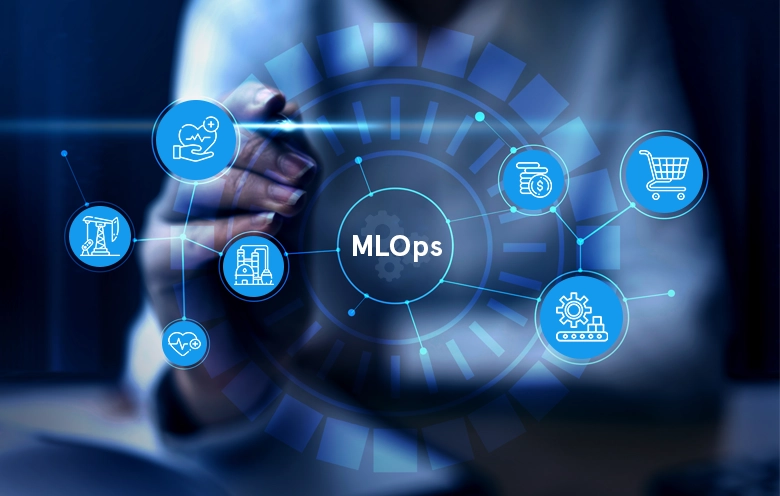Introduction
Machine learning has become an integral part of modern businesses, powering everything from recommendation systems to fraud detection. However, deploying and maintaining machine learning models in production is challenging. This is where MLOps (Machine Learning Operations) kicks in. MLOps bridges the overall gap between data science and operations, ensuring that machine learning workflows are automated, scalable, and reliable.
For professionals looking to master MLOps, enrolling in a data scientist course can provide hands-on training and expertise. Particularly for those in India, a data science course can offer insights into the latest advancements in machine learning deployment. In this article, we will explore MLOps, its components, benefits, and various best practices for implementing it in machine learning workflows.
What is MLOps?
MLOps is a set of practices that aim to automate as well as streamline the entire lifecycle of machine learning (ML) models, from development to overall deployment and monitoring. It combines machine learning, DevOps, and data engineering to ensure models are efficiently managed and continuously improved.
Key principles of MLOps include:
- Collaboration – Encouraging collaboration between data scientists, engineers, and IT teams.
- Automation – Reducing manual intervention in data preprocessing, model training, and deployment.
- Scalability – Ensuring models can handle increasing amounts of data and traffic.
- Monitoring – Continuously tracking model performance and detecting anomalies.
- Governance – Maintaining compliance with regulations and managing model versioning.
The Importance of MLOps in Modern AI Systems
As businesses scale their AI solutions, they face challenges in maintaining accuracy, reliability, and efficiency. MLOps provides a structured approach to overcoming these challenges. Some key reasons why MLOps is essential include:
- Ensures Model Consistency – MLOps enables teams to develop models that perform consistently across various environments, from testing to production.
- Reduces Deployment Time – With automated workflows, businesses can deploy models faster without manual errors.
- Improves Model Performance – Continuous monitoring and retraining ensure that models remain relevant and accurate over time.
- Enhances Collaboration – MLOps fosters collaboration between different teams, reducing friction in the AI development process.
- Manages Model Drift – Over time, machine learning models can become quite less effective due to changes in data. MLOps helps detect and mitigate this issue.
Key Components of MLOps
Implementing MLOps requires integrating multiple components into a seamless workflow. The key components include:
- Data Engineering and Preparation
- Data ingestion from multiple sources (databases, APIs, cloud storage).
- Data cleaning and preprocessing to remove inconsistencies.
- Feature engineering for better model performance.
- Model Development and Experimentation
- Selecting the right machine learning algorithms.
- Experimenting with different hyperparameters and architectures.
- Versioning models for reproducibility.
- Model Training and Validation
- Automating model training pipelines.
- Cross-validation to prevent overfitting.
- Tracking model metrics using tools like MLflow.
- Model Deployment and Serving
- Deploying models to cloud platforms or on-premise servers.
- Using containerization tools like Docker and Kubernetes for scalability.
- Implementing APIs for real-time model inference.
- Model Monitoring and Maintenance
- Logging predictions and analyzing errors.
- Setting up alerts for model drift or data anomalies.
- Retraining models periodically with fresh data.
- Security and Compliance
- Ensuring data privacy and compliance with numerous regulations like GDPR.
- Managing access control and authentication for model endpoints.
- Implementing bias detection and fairness checks.
Best Practices for Implementing MLOps
To successfully implement MLOps, businesses should follow best practices that optimize efficiency and minimize risks. These include:
- Automate Everything – From data ingestion to model deployment, automate repetitive tasks to mitigate human errors and save time.
- Use CI/CD for ML – Continuous Integration and Continuous Deployment (CI/CD) pipelines should be adopted for machine learning models to streamline updates and releases.
- Monitor Model Performance Continuously – Set up dashboards and alerting mechanisms to assess key performance indicators (KPIs).
- Enable Collaboration – Use version control systems like Git and platforms like MLflow to keep track of experiments and changes.
- Ensure Scalability – Leverage cloud-based infrastructure that allows models to scale efficiently with increasing demand.
MLOps Tools and Platforms
A wide range of tools as well as platforms can facilitate the implementation of MLOps. Some of the most popular ones include:
- Data Versioning: DVC, Delta Lake
- Model Tracking: MLflow, Weights & Biases
- Orchestration: Apache Airflow, Prefect
- Deployment: TensorFlow Serving, Kubernetes, Docker
- Monitoring: Prometheus, Grafana
Each of these tools are crucial in different stages of the machine learning lifecycle, ensuring efficiency and automation.
Case Studies: MLOps in Action
- E-commerce Personalization
- An e-commerce company implemented MLOps to personalize product recommendations.
- Automated retraining pipelines improved recommendation accuracy by 20%.
- Fraud Detection in Banking
- A financial institution adopted MLOps to monitor real-time transactions for fraudulent activities.
- Continuous monitoring and anomaly detection reduced fraud by 30%.
- Healthcare Predictive Analytics
- A hospital network leveraged MLOps to predict patient readmission rates.
- The automated pipeline improved prediction efficiency and reduced manual intervention.
Challenges in Implementing MLOps
While MLOps offers significant benefits, it also presents certain challenges, such as:
- Complexity – Integrating various tools and workflows can be complex and time-consuming.
- Data Quality Issues – Poor data quality can negatively impact model performance.
- Cost of Infrastructure – Maintaining scalable ML infrastructure requires investment in cloud services and computational resources.
- Security Risks – Ensuring model security and preventing adversarial attacks is crucial for business success.
Addressing these challenges requires a highly strategic approach, continuous improvement, and skilled professionals with expertise in MLOps.
Future of MLOps
The future of MLOps is promising, with continuous advancements in automation, cloud computing, and AI governance. Key trends to watch include:
- AutoML and Hyperparameter Tuning – Enhanced automation in model selection and tuning.
- Serverless MLOps – Serverless architectures will reduce infrastructure management overhead.
- Responsible AI – Increased focus on ethical AI and bias mitigation.
- Edge Computing for ML – Running ML models on edge devices for real-time processing.
Conclusion
MLOps is revolutionizing how businesses develop, deploy, and maintain machine learning models. By automating workflows, ensuring scalability, and improving model reliability, MLOps helps organizations maximize the value of their AI investments.
For professionals looking to advance their careers in AI and machine learning, enrolling in a data scientist course can provide essential skills and expertise. A data science course in mumbai can further enhance understanding of MLOps principles and real-world applications.
As machine learning adoption continues to grow, organizations that implement MLOps effectively will gain a competitive edge, enabling them to build more reliable, efficient, and scalable AI solutions.
Business Name: ExcelR- Data Science, Data Analytics, Business Analyst Course Training Mumbai
Address: Unit no. 302, 03rd Floor, Ashok Premises, Old Nagardas Rd, Nicolas Wadi Rd, Mogra Village, Gundavali Gaothan, Andheri E, Mumbai, Maharashtra 400069, Phone: 09108238354, Email: enquiry@excelr.com.

